4 Weed Control Myths Busted

There are a lot of myths, misconceptions and confusion around row-crop herbicides and the regulations some have. Get the facts behind four common weed control myths.
Weed control decisions and investments are critical parts of every growing season and directly impact your bottom line. Get the facts about using the Enlist® weed control system to keep herbicide-resistant weeds from robbing yield:
FACT: In February 2024, the U.S. Environmental Protection Agency (EPA) announced the three dicamba products previously approved for over-the-top use of dicamba-tolerant soybeans are no longer registered. The EPA also issued an existing stock order to authorize limited sale and distribution of existing stocks in 2024 that were already in the possession of persons other than the registrant.
That means there are no over-the-top applications of dicamba on dicamba-tolerant soybeans for the 2025 season. Although some dicamba products may be used for burndown, product labels mandate plant-back restrictions ranging from 14 to 28 days.
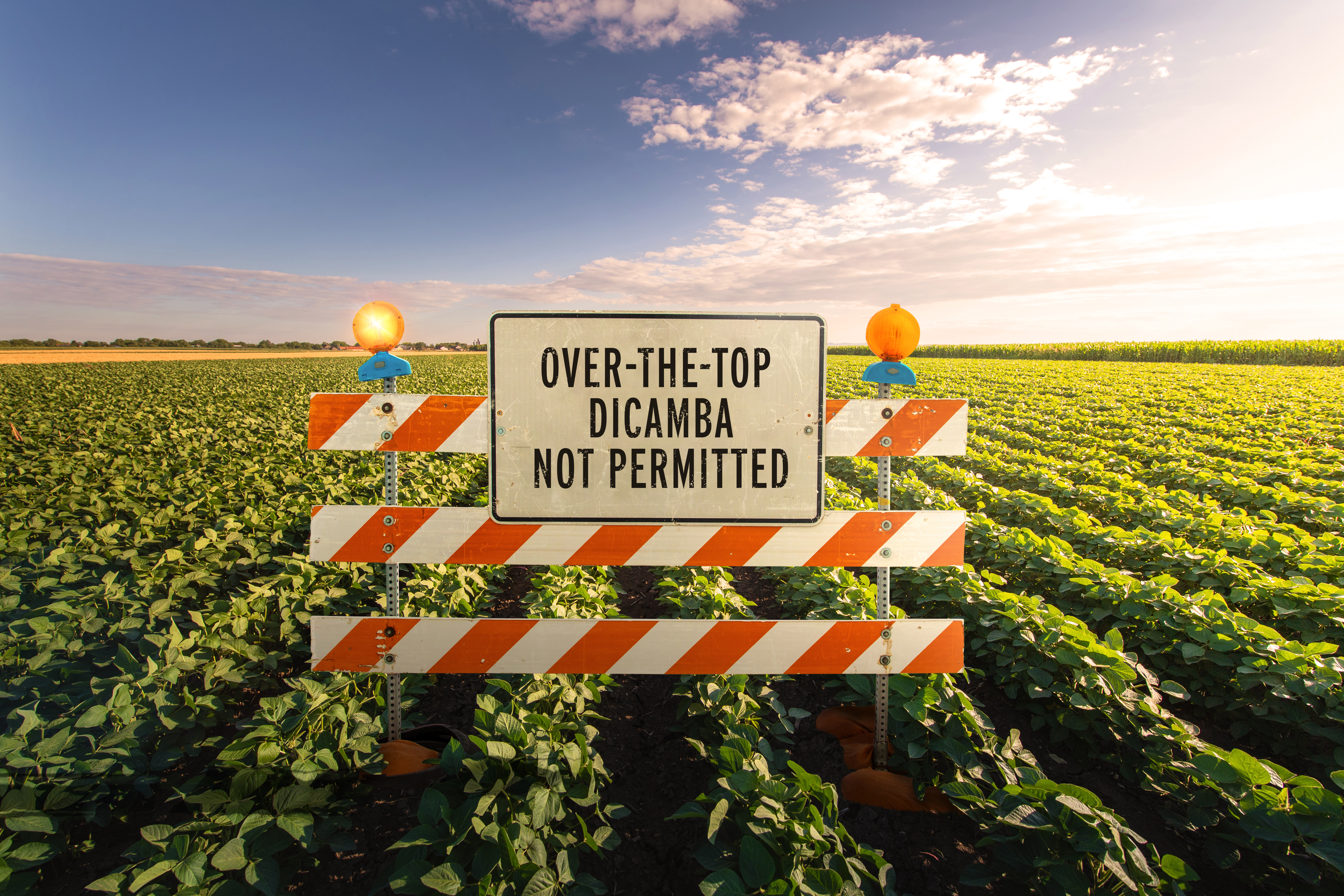
The future of over-the-top dicamba applications is uncertain as the EPA reviews label reregistrations for the 2026 season and beyond. New registrations would be analyzed by EPA under the guidelines in the EPA Herbicide Strategy to meet obligations in the Endangered Species Act.
But farmers have great options. Enlist® herbicides, which are registered through 2029, provide more tank-mix flexibility than dicamba along with wide application windows and no calendar cutoff dates.
Enlist herbicides also have more than 1,700 qualified tank-mix partners, no time-of-day application restrictions and a broad range of qualified nozzles, so farmers can find the right balance of coverage and drift control.
FACT: Enlist herbicides do not cause soybean cupping.
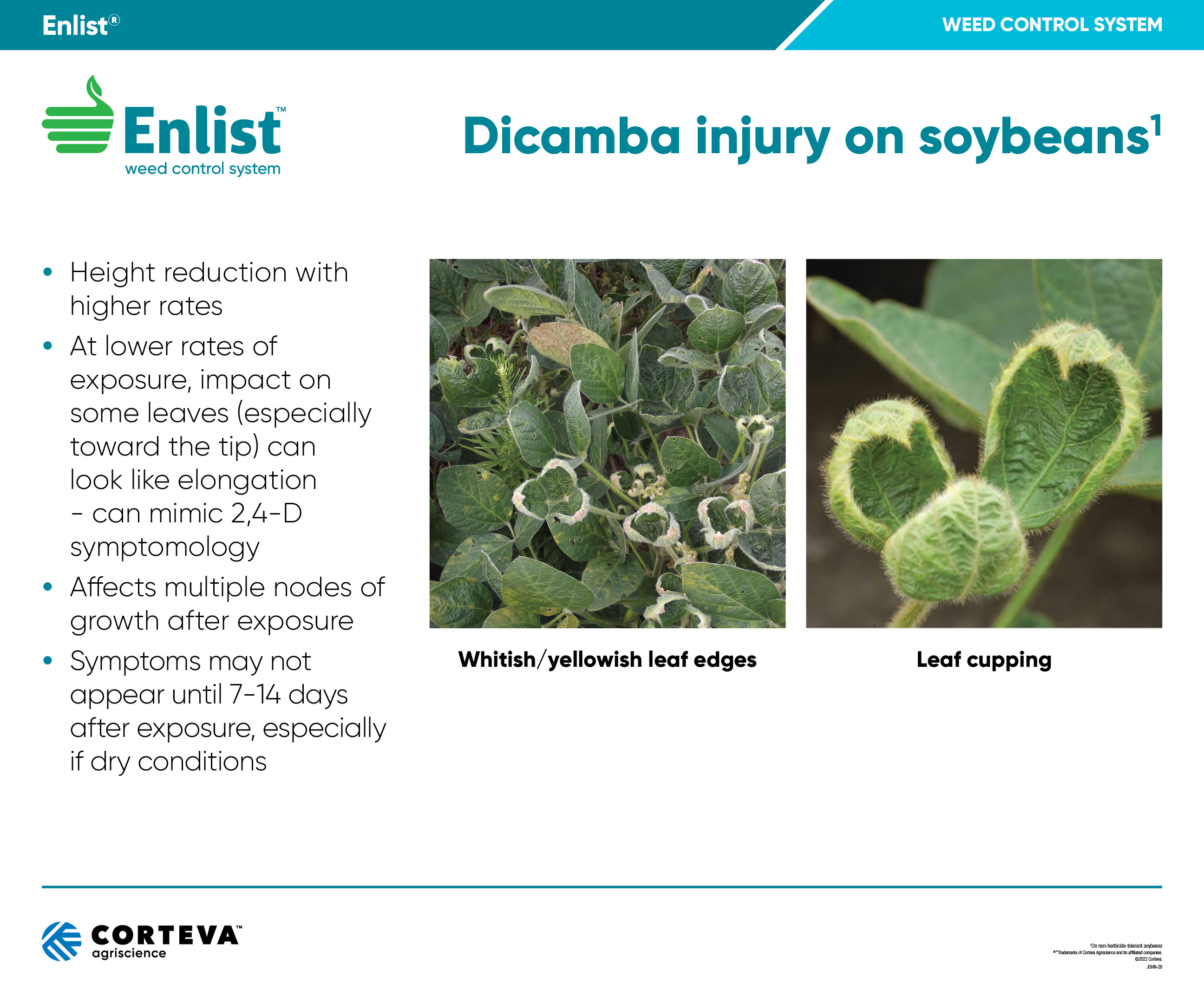
Soybean cupping is crop injury caused by dicamba drifting onto Enlist E3® soybeans or other soybeans not tolerant to dicamba. Soybeans without the dicamba-tolerant trait may show symptomology from dicamba exposure at less than 1/800 of the standard spray rate, according to crop sensitivity research from University of Georgia.
After an application of an Enlist® herbicide, Enlist E3 soybeans may show temporary crop response. This “droop” or “sleepy” effect on the crop occurs while the plant is working to metabolize 2,4-D choline. It’s more likely to occur in conditions where the plant is stressed, including hot daytime temperatures and drought. The plants metabolize the 2,4-D choline and return to normal typically within 24 to 48 hours.
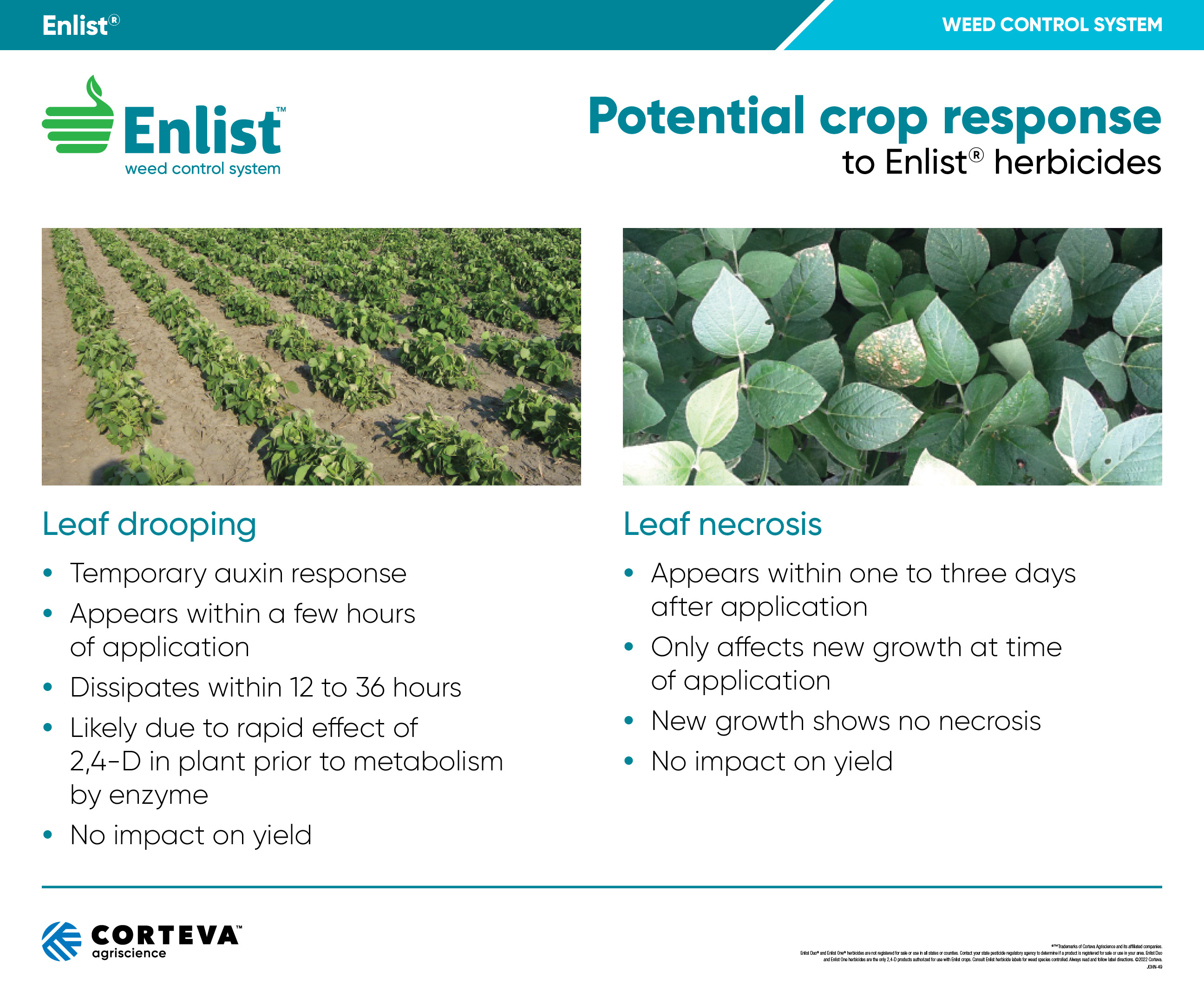
FACT: Many factors, such as improper nozzle use and wind or weather conditions, can cause drift
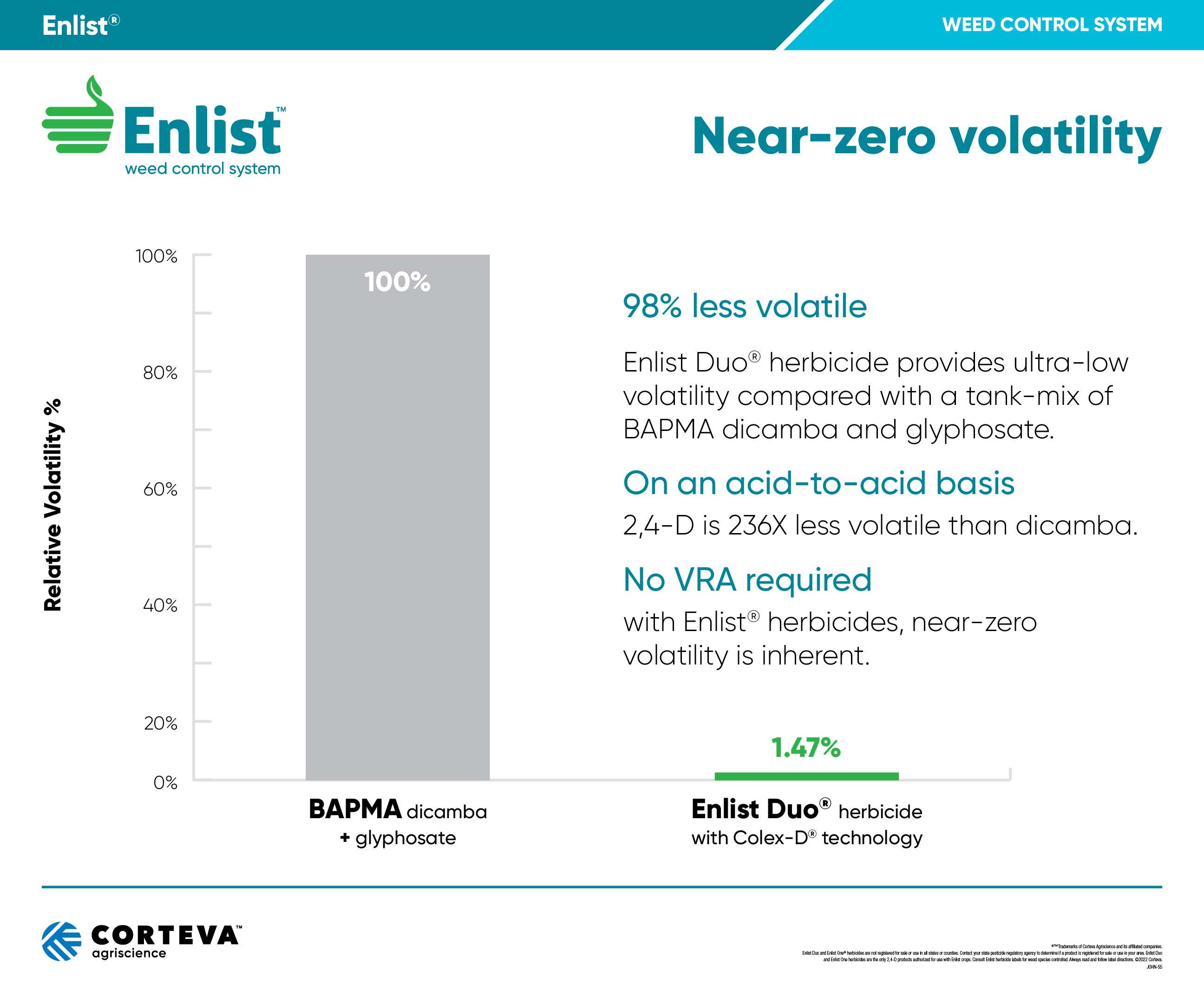
Not all herbicides are formulated in the same way. Some are more prone to drift than others.
Enlist One® and Enlist Duo® herbicides are formulated with Colex-D® technology and proven to have near-zero volatility and less physical drift than dicamba when following label directions and using qualified nozzles.
Enlist Duo herbicide is 98% less volatile compared with a tank mix of BAPMA dicamba and glyphosate.
FACT: The Enlist weed control system gives farmers more flexible weed control than other systems and encourages use of a program approach to manage those weeds.
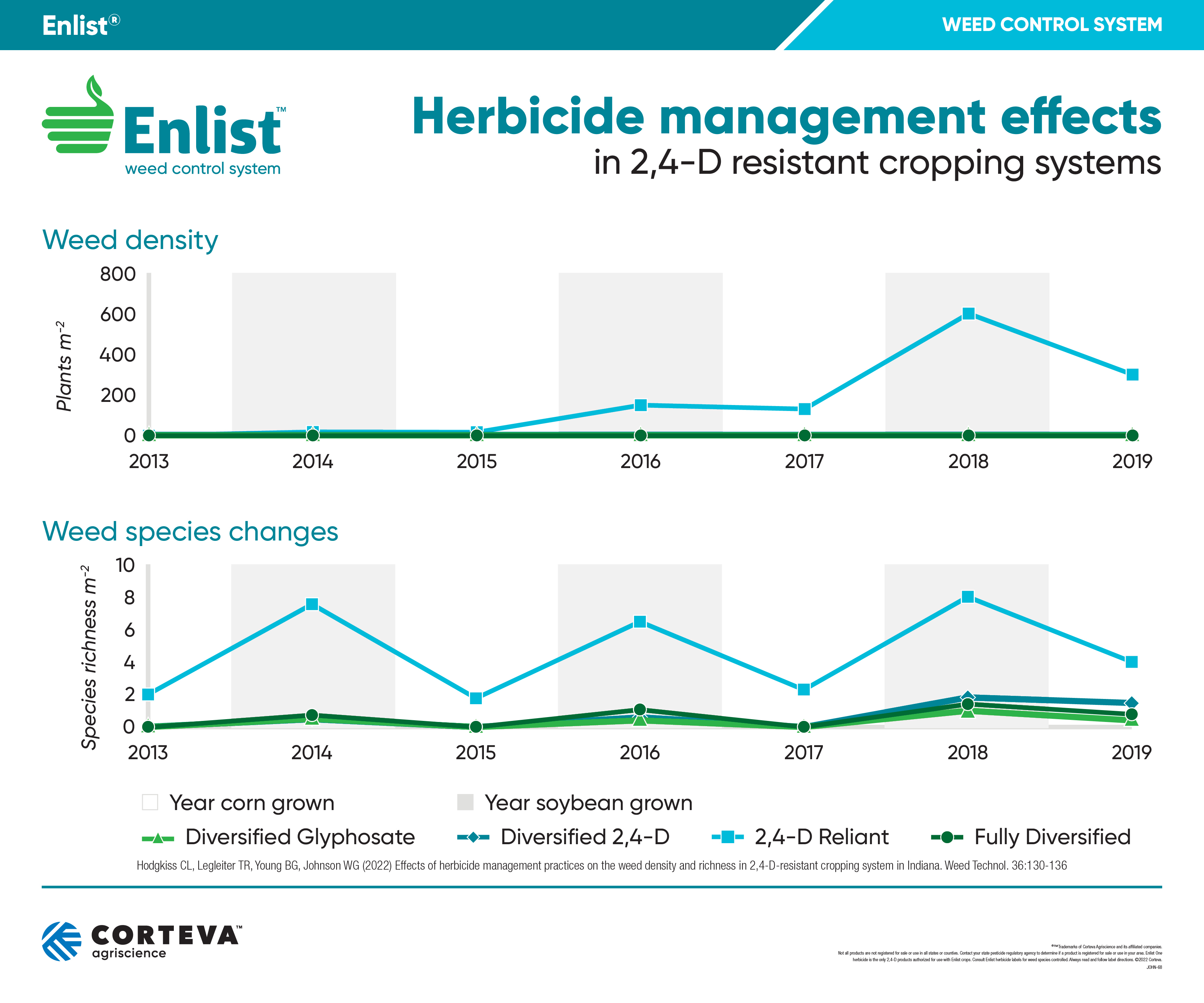
Farmers continue to battle resistant weeds, particularly those resistant to glyphosate. With flexible tank-mix options, farmers can use the most effective tank mix for their operation, including Enlist One® herbicide and glufosinate, to control those resistant weeds.
Purdue University conducted a seven-year study that showed using multiple modes of action in a fully diversified weed control program will reduce the weed seedbank and reduce the number of weed species — therefore, mitigating the evolution of herbicide resistance.
There are more than 1,700 qualified products — including herbicides, fungicides, insecticides and adjuvants — that farmers can tank mix with Enlist One herbicide and apply over the top of Enlist® crops — soybeans, cotton and corn — for broad-spectrum weed control. Enlist herbicides also can be applied preemergence and in burndown — with no plant-back restrictions for Enlist crops.
To learn more about preventing weed resistance, farmers can use the Enlist® Ahead management resource, which offers best practices, tools and training to help farmers achieve optimum results and sustain the long-term performance of the Enlist system.
™®Colex-D, Enlist, Enlist Duo, Enlist E3 and Enlist One are trademarks of Corteva Agriscience and its affiliated companies. The transgenic soybean event in Enlist E3® soybeans is jointly developed and owned by Corteva Agriscience and M.S. Technologies L.L.C. Following burndown, Enlist Duo® and Enlist One® herbicides with Colex-D® technology are the only herbicides containing 2,4-D that are authorized for preemergence and postemergence use with Enlist® crops. Consult Enlist® herbicide labels for weed species controlled. Enlist Duo and Enlist One herbicides are not registered for use or sale in all states and counties; are not registered in AK, CA, CT, HI, ID, MA, ME, MT, NH, NV, OR, RI, UT, VT, WA and WY; and have additional subcounty restrictions in AL, GA, TN and TX, while existing county restrictions still remain in FL. All users must check “Bulletins Live! Two” no earlier than six months before using Enlist One or Enlist Duo. To obtain “Bulletins,” consult epa.gov/espp/, call 1-844-447-3813, or email ESPP@epa.gov. You must use the “Bulletin” valid for the month and state and county in which Enlist One or Enlist Duo are being applied. Contact your state pesticide regulatory agency if you have questions about the registration status of Enlist® herbicides in your area. ALWAYS READ AND FOLLOW PESTICIDE LABEL DIRECTIONS. IT IS A VIOLATION OF FEDERAL AND STATE LAW TO USE ANY PESTICIDE PRODUCT OTHER THAN IN ACCORDANCE WITH ITS LABELING. ONLY USE FORMULATIONS THAT ARE SPECIFICALLY LABELED FOR SUCH USE IN THE STATE OF APPLICATION. USE OF PESTICIDE PRODUCTS, INCLUDING, WITHOUT LIMITATION, 2,4-D-CONTAINING PRODUCTS NOT AUTHORIZED FOR USE WITH ENLIST CROPS, MAY RESULT IN OFF-TARGET DAMAGE TO SENSITIVE CROPS/AREAS AND/OR SUSCEPTIBLE PLANTS, IN ADDITION TO CIVIL AND/OR CRIMINAL PENALTIES. Additional product-specific stewardship requirements for Enlist crops, including the Enlist Product Use Guide, can be found at www.traitstewardship.com. Always read and follow label directions.